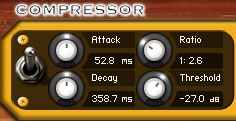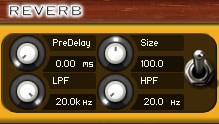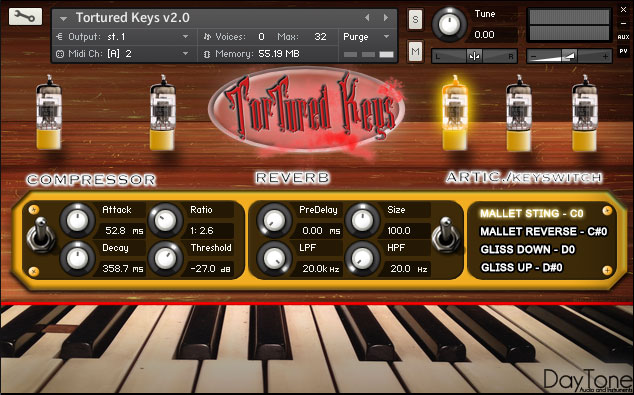Tortured keys is a disturbing collection of samples that shows what you can do when you take a piano to its limits.
This library captures the guttural grumblings and piercing hisses of a vintage 1937 Gulbransen grand piano. With the help of metal files, mallets, and wrenches, this piano was sampled with hard impacts and hair-raising stings in mind.
The library offers a variety of groans, moans, and shrieks let out by a tortured piano and is ideal for stings and beds in any genre – especially horror, thriller, and ambient music. The library was created specifically for use in the horror feature ALP and was used throughout the film.
Main Interface
The Tortured Keys interface is split into three sections. As well as the interactive knobs and switches there are five old fashioned valves, these exist purely as visual indicators to help you identify which effects and articulations are currently active.
Compressor
 The compressor is activated using the switch and the valve above will light up when the compressor is active. Four knobs to the right of the switch provide control over the compressors standard features: attack, compression ratio, decay, and threshold. Click here for a quick guide to using a compressor.
The compressor is activated using the switch and the valve above will light up when the compressor is active. Four knobs to the right of the switch provide control over the compressors standard features: attack, compression ratio, decay, and threshold. Click here for a quick guide to using a compressor.
Reverb
 Tortured Keys makes use of Kontakt’s high quality convolution reverb effect, use the switch in this section to enable it, the second valve from the left will light up when the reverb is active. Like the compressor there are four knobs to give you control over the reverb’s parameters: pre-delay, room size, low pass filtering, and high pass filtering. The reverb is positioned after the compressor in the effects chain.
Tortured Keys makes use of Kontakt’s high quality convolution reverb effect, use the switch in this section to enable it, the second valve from the left will light up when the reverb is active. Like the compressor there are four knobs to give you control over the reverb’s parameters: pre-delay, room size, low pass filtering, and high pass filtering. The reverb is positioned after the compressor in the effects chain.
Articulations and Key Switches
This section displays a list of the articulations available in the instrument, you can click an articulation on the interface or press its corresponding key switch (shown at the end of the articulation’s name) to active it. The currently selected articulation glows yellow and one of the three valves above this section will be lit depending on which articulation is active (the Mallet Sting and Mallet Reverse articulations both illuminate the first of the three values).
Keyboard Layout
The keyboard layout for Tortured Keys is very simple. The red keys at the lower end of the keyboard allow you to switch between articulations. The blue keys show the playable range of the instrument – the glissando samples have a smaller range than the other articulations and Kontakt’s keyboard will update to show this when they are selected.
Mod-wheel
The mod-wheel can be used to offset the start position of the Mallet Reverse samples. These were created by slightly trimming the Mallet Sting samples and reversing them. The Mallet Sting samples have a naturally long decay so when they are reversed it can sometimes feel it’s taking a little too long to get into the main body of the sample; increasing the mod-wheel (CC1) will move the start position further into the sample allowing you to create just the right amount of tension before the sound builds up to the final reversed hit.
Acknowledgments
Produced by: DayTone Audio
Scripting: David Healey


